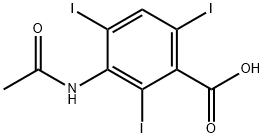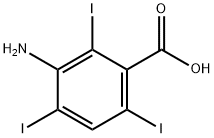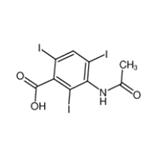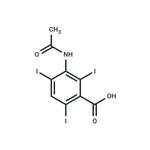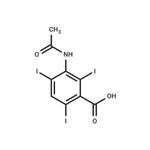Chemical Properties
Acetrizoic acid is an ionic monomeric contrast medium. It was first synthesized by Wallingford in 1953 and it was filled in the FDA by the Johnson & Johnson subsidiary, Cilag Chemie AG, on February 8th, 1978.Acetrizoic acid presents, in the FDA records, a category of drug substance with an inactive status.
Uses
Radiopaque agent: Acetrizoic acid (trade names Gastrografina, Urografina in Portugal) is a palatable lemon-flavored water-soluble iodinated radiopaque X-ray contrast medium for oral or rectal administration only. Acetrizoic acid is indicated for radiographic examination of segments of the gastrointestinal tract (esophagus, stomach, proximal small intestine, and colon). The preparation is particularly indicated when a more viscous agent such as barium sulfate, which is not water-soluble, is not feasible or is potentially dangerous. Administration of hypertonic Gastrografin solutions may lead to hypovolemia and hypotension due to fluid loss from the intestine.
Definition
ChEBI: Acetrizoic acid is an aminobenzoic acid.
Indications
Acetrizoic acid indication was to be used as a contrast agent for X-ray. Some information indicates its nephrotropic property as one of the characteristics for the utilization of acetrizoic acid.The X-ray imaging depends on the difference in tissue density which is provided by an X-ray attenuation between the area of interest and the surrounding tissue. The use of contrast agents will provoke a contrast enhancement or opacification and it will improve the differentiation of pathological processes from normal tissue.
brand name
Salpix (Ortho-McNeil).
Safety Profile
Mildly toxic by ingestion andintravenous routes. When heated to decomposition it emitstoxic fumes of I- and NOx.
